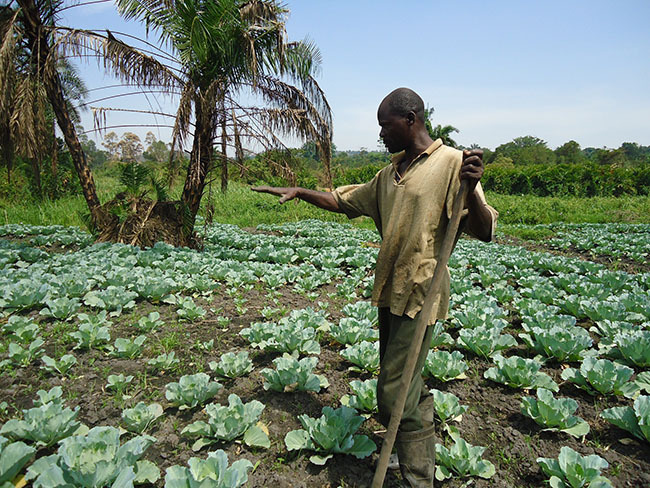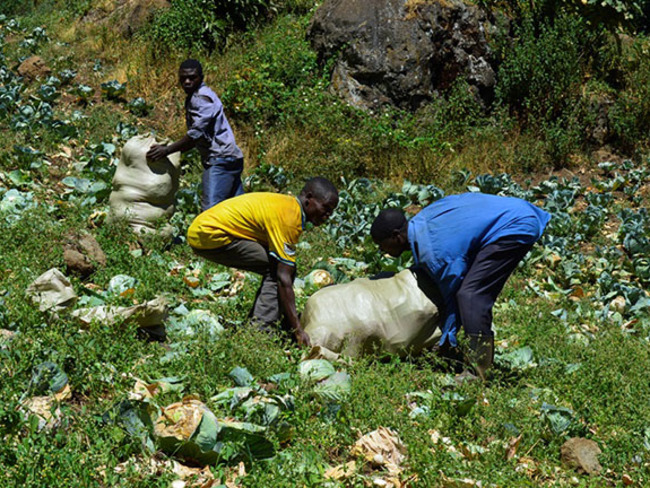Diversification kept Ssemambo in business
Ssemambo’s father always encouraged him to engage in as many businesses as possible, so that in case some failed, others would succeed.
FARMING | AGRICULTURE
LUWEERO - If you ask Martin Ssemambo for the secret behind his success as a cabbage farmer, his answer would be diversification.
Ssemambo's father always encouraged him to engage in as many businesses as possible, so that in case some failed, others would succeed. This is the lesson Ssemambo took to heart, and it is paying off.
He started buying coffee, beans and maize from villagers at a cheap price and sell them to big companies at a relatively high price. He often boosted his business using loans, however, the debt burden was a challenge.
He then decided to venture into commercial cabbage farming to reduce his dependence on loans.
 Martin Ssemambo at his cabbage garden. Photo by Umar Nsubuga
Martin Ssemambo at his cabbage garden. Photo by Umar Nsubuga
But balancing the two business was not an easy task, yet cabbage growing, that he started on half an acre of land in 2015 was paying off more than his earlier business. He thus ditched the coffee, beans and maize trade for cabbage growing.
Ssemambo's farm is located in Junda village, Luwero district. His efforts attracted a lot of attention from people who thought it was impossible to carry out serious cabbage farming.
"Many people doubted my dream when I decided to venture into cabbage growing because I did not have any experience. Now people ask me how I manage this project which makes me happy', he says.
Hardwork pays off
"What I started as a joke is now a business. It is now instrumental in my life, with cabbage, I have been able to employ two workers and I pay them on time, I do not buy foodstuffs from the market because, much as I sell most of the cabbages I produce, there is always other crops I grow for home consumption," Ssemambo narrates.
 Martin Ssemambo's employees at the farm
Martin Ssemambo's employees at the farm
Challenges
Watering the plants especially during the dry season is his biggest challenge because the garden is far away from a water source.
However, his children, fetch the water during the dry seasons.
He also says that continuous spraying has kept the cabbages healthy.
Benefits from cabbages growing
Ssemambo earns a net profit of sh1m from selling cabbages every successful season, per quarter.
From the earnings, he has been able to boost his business, raise school fees and support his family.
How to harvest cabbages
-
Cut the ball of young leaves from the center of the plant.
-
It should be a firm ball shape varying in size depending on the variety.
-
Remove the root after harvesting to prevent the spread of pests and diseases.
-
With spring cabbages, it is possible to cut the stalk with a cross on the top to encourage growth.
More about cabbages
-
Cabbages are known as heavy feeders. They grow well in fertile and well drained soils.
-
They need continuous watering. Irregular watering leads to stunted growth and poor harvests.
-
Mulching is encouraged to control weeds from affecting cabbages.
-
After planting and transplanting, cabbages need spraying to protect them from pests.